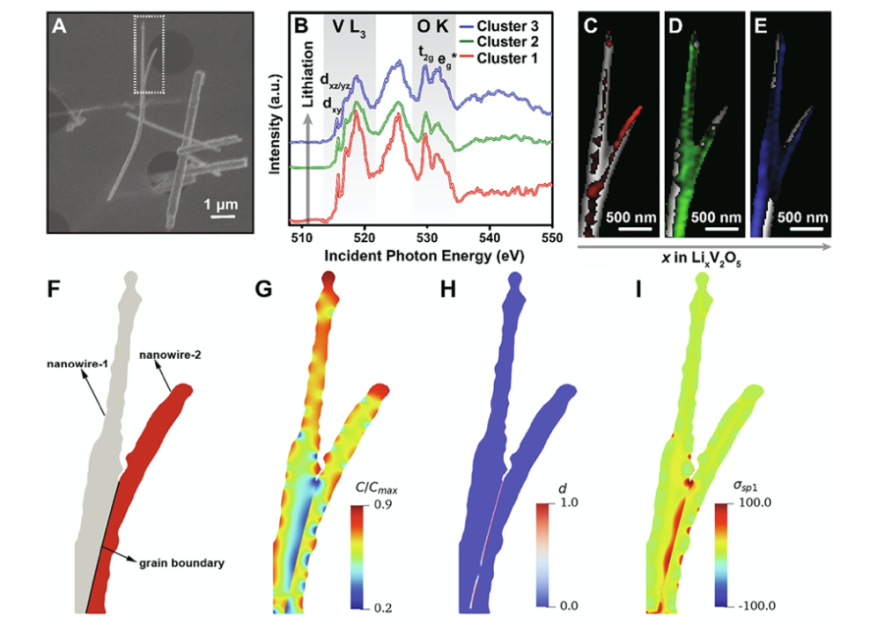A chemo-mechanical damage model at large deformation: numerical and experimental studies on polycrystalline energy materials
New Publication in “International Journal of Solids and Structures”
2021/06/18

Authors: Yang Bai, David A. Santos, Shahed Rezaei, Peter Stein, Sarbajit Banerjee, Bai-Xiang Xu
The unique mechanical properties and transport features of grain boundaries (GBs) in polycrystalline materials have been widely investigated. However, studies which focus on the unique chemo-mechanics phenomena resulting from GBs’ are exceedingly sparse. In this work, a thermodynamically consistent framework has been developed to explore the multi-physics coupling between mechanics and species diffusion. Constitutive laws for the bulk and the across-GB interaction laws have been derived for large deformations from the system free energies. A chemo-mechanically coupled cohesive zone model is developed which takes into account mode-dependent fracture properties in the presence of GBs. Polycrystalline LiNixMnyCozO2 (NMC) particles and LixV2O5 nanowires have been selected to demonstrate the impact of GBs on the modeled and observed chemo-mechanics. The model has been implemented in the open-source finite element (FE) package MOOSE. Simulation results indicate that the chemical process and the mechanical degradation go hand-in–hand, where enhanced intergranular chemical inhomogeneities weaken the mechanical strength of the GBs, while damage to the GBs affects or even block transport across the GB. Furthermore, experimentally observed characteristics of chemo-mechanical degradation, e.g., chemical ‘‘hot-spots” and surface layer delamination can be accurately predicted by the model.



